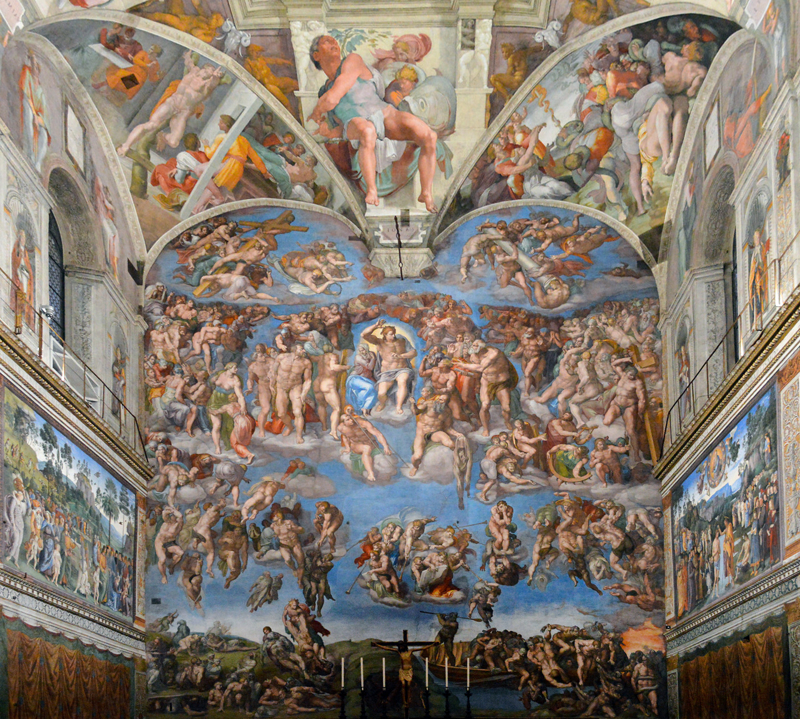Renaissance Art
The Sistine Chapel was built in the 1470s and became most famous for its murals, created by Michelangelo. He began the ceiling in 1508 and took four years to complete. Then, he returned in his sixties to create The Last Judgement from 1536 to 1541. This piece covers the entire far altar wall of the Sistine Chapel and depicts the second coming of Christ and his judgment of humanity. It features over 300 figures arranged in a sub-grouping manner, with Christ at the center. The mural is painted over such a large area that it appears to be without borders, which in combination with the sub-grouping layout, creates an immersive effect for viewers. The entirety of Michelangelo’s work throughout the Sistine chapel depicts the history of salvation and indirectly highlights the magnitude of which religion heavily
Saphyn Neff
6 chapters
23 Feb 2022
The Last Judgement
June 18, 1542
|
The Sistine Chapel, Vatican City, Rome
The Sistine Chapel was built in the 1470s and became most famous for its murals, created by Michelangelo. He began the ceiling in 1508 and took four years to complete. Then, he returned in his sixties to create The Last Judgement from 1536 to 1541. This piece covers the entire far altar wall of the Sistine Chapel and depicts the second coming of Christ and his judgment of humanity. It features over 300 figures arranged in a sub-grouping manner, with Christ at the center. The mural is painted over such a large area that it appears to be without borders, which in combination with the sub-grouping layout, creates an immersive effect for viewers. The entirety of Michelangelo’s work throughout the Sistine chapel depicts the history of salvation and indirectly highlights the magnitude of which religion heavily

influenced culture and architecture during the Renaissance. Michelangelo was also the master of male nudity during the Renaissance. The Last Judgement sparked debate amongst citizens due to the extensive nudity featured throughout the Chapel, however it ultimately became a transition to a more accepting society of artistic nudity and expression, particularly in a religious context. Many other great artists during of this time were also commissioned to paint the inside of the Sistine Chapel including Sandro Botticelli, Domenico Ghirlandaio, Pietro Perugino, Pinturicchio, and Cosimo Roselli.
The Sistine Chapel was considered private, meaning it belonged to the Papal Court. The Papal Court is a group of religious dignitaries

that would assist the Pope in various ceremonies. These ceremonies included, but were not limited to, “feast day liturgies,” (Camara) and the College of Cardinals election of a new Pope. Other important members or figures of the city would participate in these events, as well. Interestingly, there was a chimney in the chapel that would emit either white or black smoke, depending on the election results of the Pope. This chapel was one of the most important buildings in Roman Renaissance culture, functioning as one of its main religious centers. Due to this notability and the extensive interior decoration and commission of many prominent artists, the Sistine Chapel is one of the world’s most renowned examples of artistic expression during the Renaissance.

Share your travel adventures like this!
Create your own travel blog in one step
Share with friends and family to follow your journey
Easy set up, no technical knowledge needed and unlimited storage!